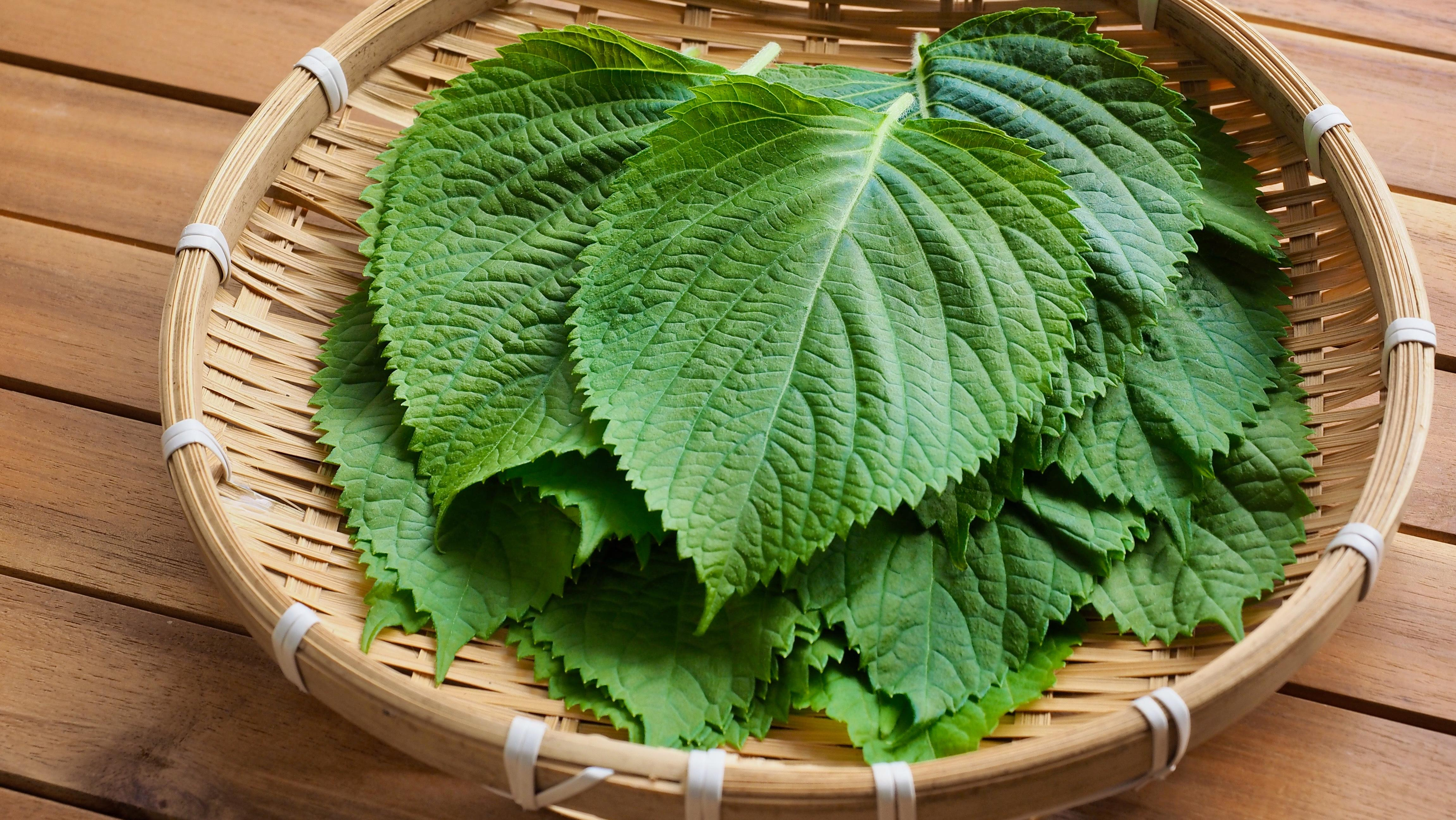Perilla Belongs In Your Garden
Kkaennip, a Korean summer staple, packs a lot of flavor.
Every year, my parents plant seeds for a very specific harvest that they pluck throughout the summer. This plant yields a spade-like leaf with distinctly serrated edges, full of minty aromas and an herbaceous flavor. In Korean, the leaf is called kkaennip; in English, it's called perilla, and it's an herb that belongs in your kitchen, if not your garden, too.
What is perilla?
Perilla is part of the mint family and has a complex flavor that's mildly like licorice (but not so much as in basil). It's somewhat grassy and does indeed have a refreshing minty sort of aftertaste.
At its simplest, you can serve it as an accompaniment to sticky white rice, using the leaves as a wrap for small bundles of rice along with a dab of ssamjang, a delicious dipping sauce made of fermented soybeans and gochujang, among other seasonings. If there's any grilled meat at the table, I sneak some of that in my wrap, too.
If you've ever heard of the Japanese shiso leaf, it's important to note that perilla and shiso are very similar since they're related, though shiso leaves are smaller and mintier. Confusingly, perilla is oftentimes labeled as sesame leaf at Korean grocery stores, so if that's what you stumble across, be assured that you're getting the right thing.
In Korean cuisine, the leaf isn't the only part of the plant that gets incorporated into recipes, but the seed as well, along with oil pressed from the toasted seed. We get a lot of mileage out of this plant.
How to use perilla in your cooking
There are a ton of ways to prepare perilla; you'll usually find it featured in different types of banchan. One of the most common kkaennip banchan dishes, kkaennip jjim, is where the leaves are layered with a slightly sweetened soy and fish sauce mixture with gochugaru (crushed red pepper flakes), along with green onions and sesame seeds (actual ones, not perilla seeds—confusing, I know). The leaves and sauce are assembled in a big stack and gently steamed, allowing the leaves to wilt a little and soak up more of the marinade. You can find a good recipe here at the excellent blog Korean Bapsang, though this version of the recipe is a touch spicier than you'll usually find at a restaurant, the grocery store, or someone's home.
Traditional uses aside, you can definitely use kkaennip in a million different ways: toss some julienned strips into an herb salad, sprinkle a bit into an omelette, blend it into pesto, or more. One time I combined kkaennip, parsley, cilantro, garlic, fish sauce, lime juice, and a boatload of extra virgin olive oil to create a sort of chimichurri-esque marinade for flank steak. It came out beautifully.
If you're not a green thumb (I'm definitely not; you should see what happened to my basil plant), then you don't have to grow this stuff yourself. Thankfully, you can get perilla leaves in the produce section of Korean grocery stores. It's a staple ingredient, so it's available year-round. You can also get premade kkaennip banchan too, which is really handy. Once you give perilla a try, you'll immediately understand why kkaennip is Korean cuisine's taste of summer.
